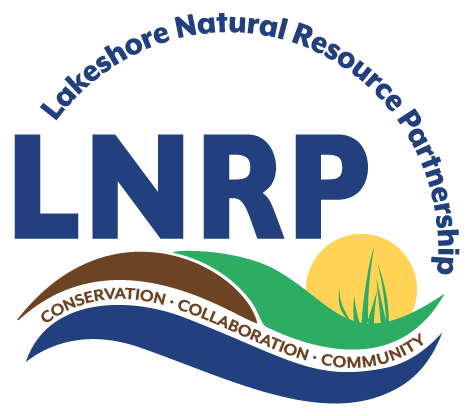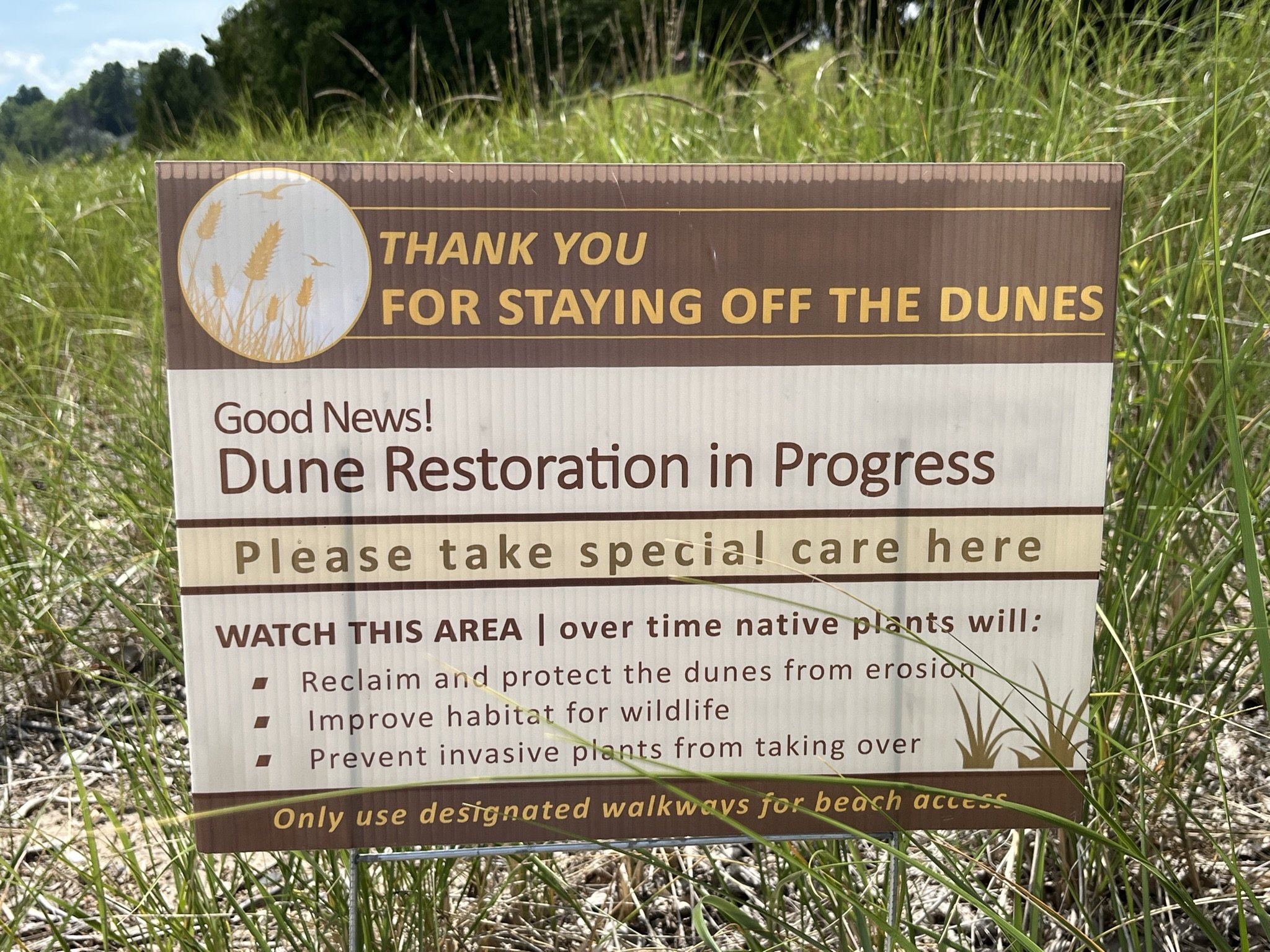The Crescent Crew: Volunteers Championing Long-Term Invasive Species Control
Nestled along the shores of Lake Michigan, Crescent Beach in Algoma is a beloved destination for locals and visitors alike. However, maintaining the beauty and ecological health of this valued community space requires continuous effort, especially in the battle against invasive species. Enter the Friends of Crescent Beach (FOCB) and their dedicated volunteer group, the Crescent Crew, who have taken up the challenge of restoring and preserving the natural habitat of Crescent Beach.
Taking on Shoreline Invasive Species
Founded in 2015 as a watershed partner group of Lakeshore Natural Resource Partnership (LNRP), Friends of Crescent Beach is focused on promoting the improvement, support, protection, and enjoyment of Crescent Beach. With a mission rooted in community engagement and environmental stewardship, the FOCB quickly recognized the growing threat of invasive species along the shoreline. In 2017 LNRP secured grant funding which allowed FOCB to enlist the expertise of Stantec, an environmental consulting firm. Melissa Curran, an Environmental Scientist and Botanist with Stantec, has played a crucial role in guiding the restoration process, providing detailed plans, and on-site assistance to volunteers.
Building and Sustaining Crescent Crew Volunteer Engagement
Initially, the volunteer restoration activities were organized as occasional 3-hour “drop-in” events, drawing between 15-40 volunteers for planting and maintenance efforts. However, it soon became clear that a more consistent and long-term approach was necessary to effectively manage the ever-changing landscape of invasive species. In 2021, FOCB committee member Debbie Kiedrowski, who had experience and expertise in biology and horticulture, stepped up to organize a more formal volunteer effort. Thus, the Crescent Crew was born. The volunteer group’s primary goal is to stabilize the shoreline and restore a diverse natural dune habitat by controlling non-native, invasive species and establishing native vegetation on the southern portion of Crescent Beach.
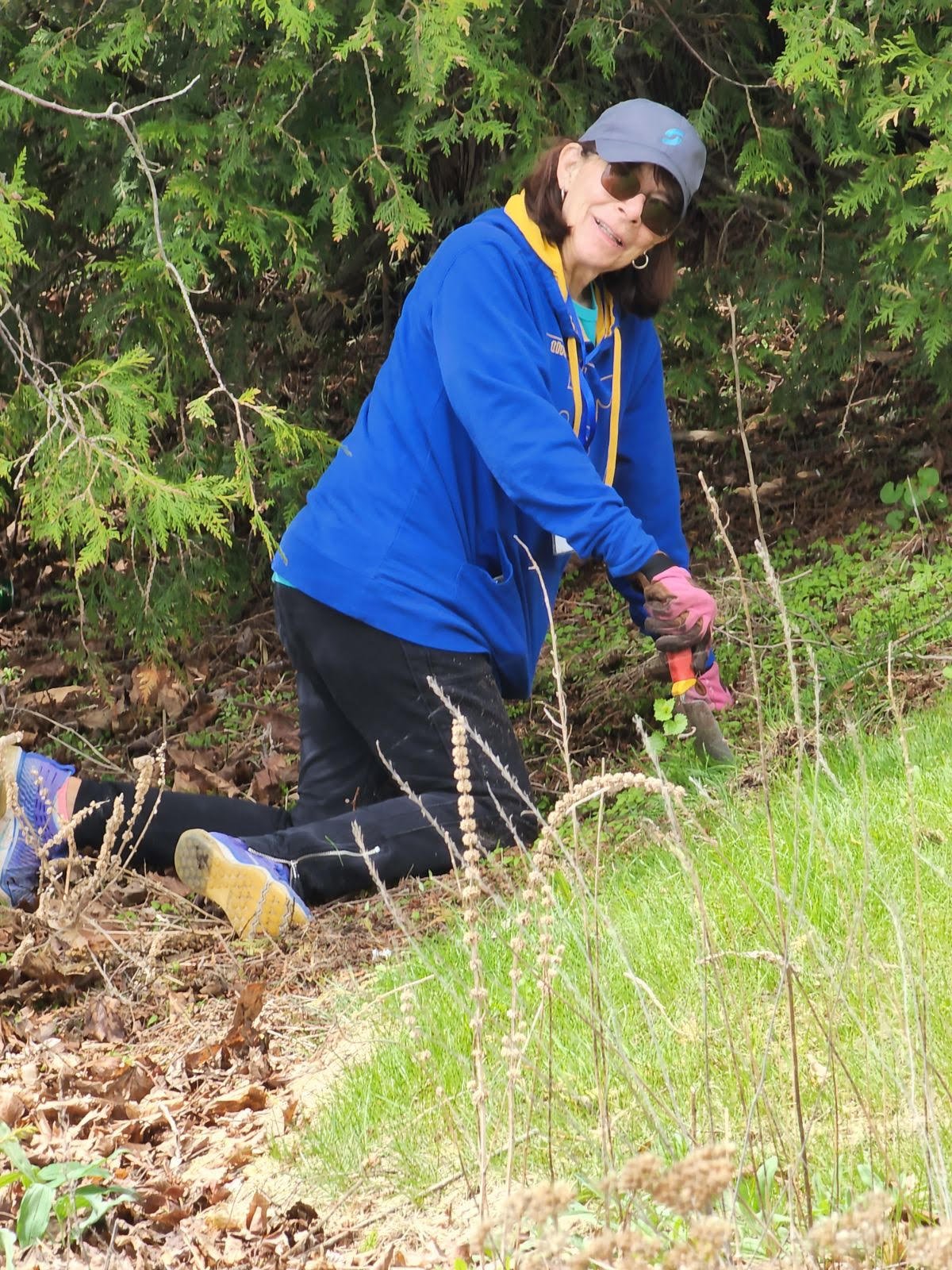
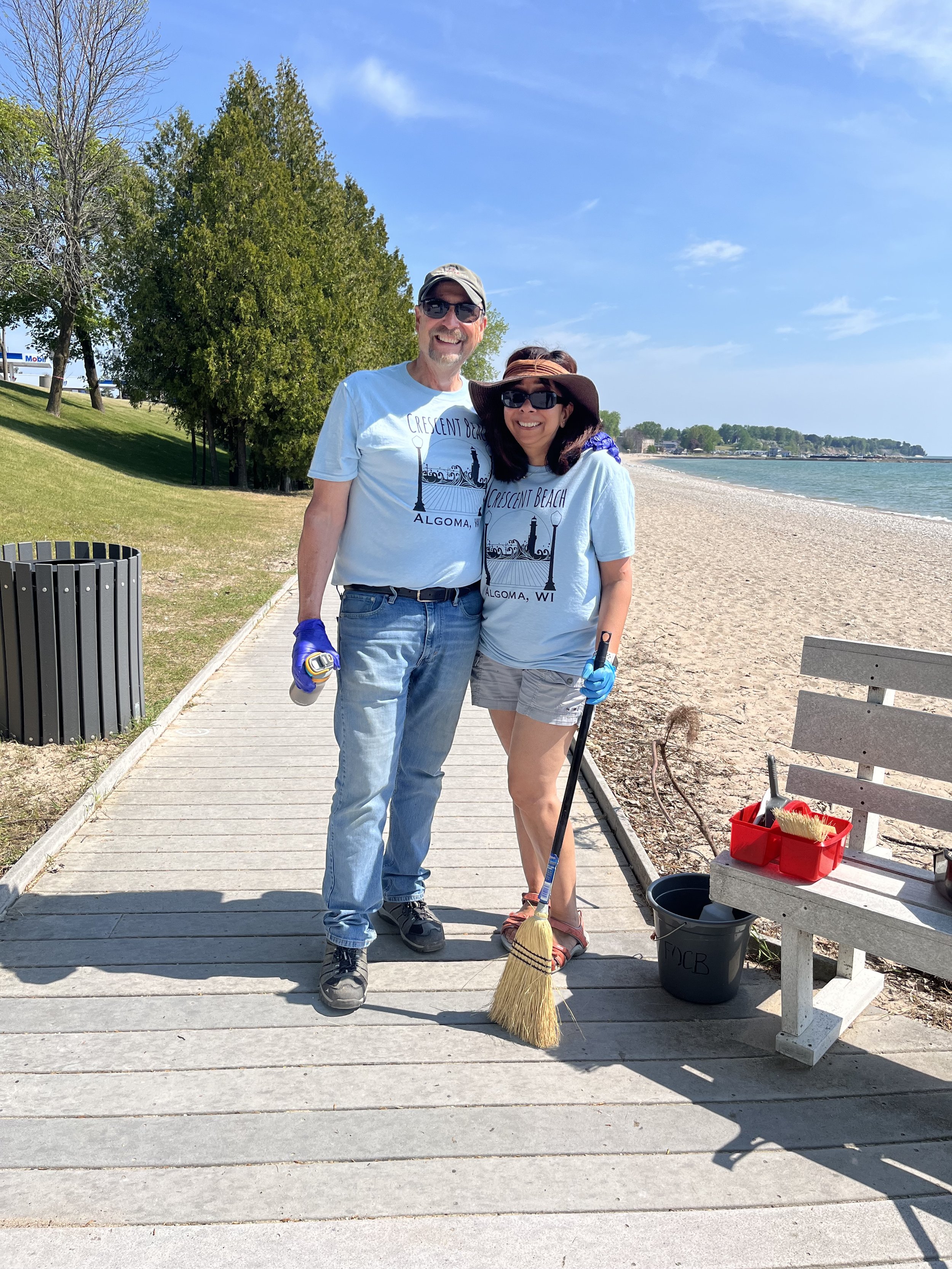

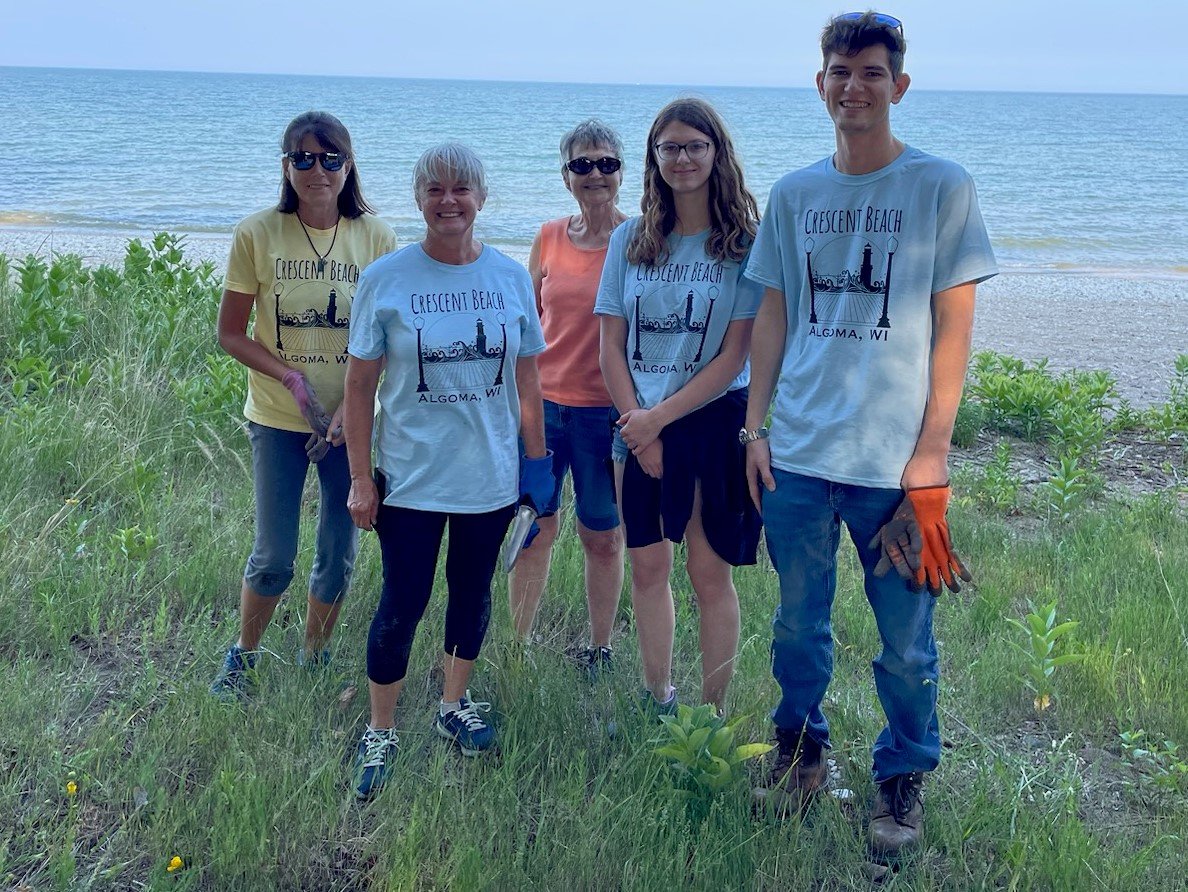
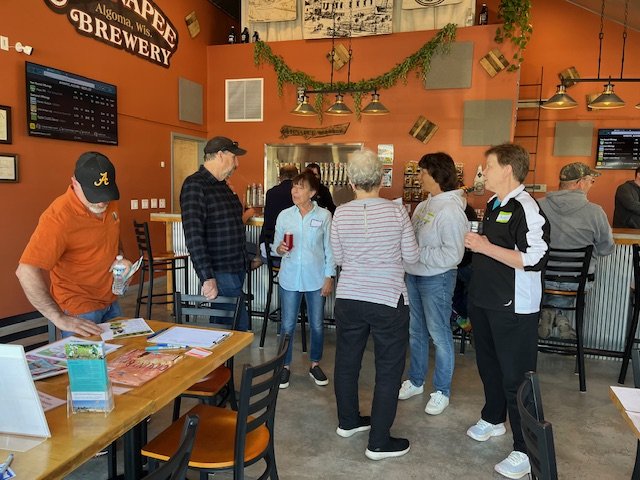

The Crescent Crew has been very successful in recruiting and retaining volunteers, with an average of 4-6 volunteers showing up to every work day. To achieve this, FOCB utilizes a combination of traditional outreach methods—such as posters around town, brightly colored t-shirts, and informational booths—and digital platforms like the Friends of Crescent Beach website, Facebook page, and newsletter. Volunteers are also drawn in by the sense of camaraderie and purpose fostered within the Crescent Crew. As Debbie works alongside volunteers, she educates them about invasive species identification and the significance of their control efforts, instilling a sense of pride in their contributions. Moreover, events such as volunteer meet & greets and appreciation dinners build a sense of community and gratitude.
Convenience, reminders, and clear instructions are other key components of sustaining engagement. As Debbie explains, “We meet once a week and rotate between mornings and evenings so we can attract volunteers with differing schedules. The work time is just an hour, so our volunteers don’t feel overwhelmed physically by the amount of time volunteering.” Debbie also sends out regular email reminders and ensures that each work session is well-organized and efficient. “When volunteers arrive, everything they need to immediately go to work, including a clear set of instructions, is ready to go,” says Cathy Pabich, the Friends of Crescent Beach Committee Coordinator. This level of preparation, coupled with ongoing education about invasive species and best management practices, helps volunteers feel valued and knowledgeable about their contributions.
Challenges and Considerations for Long-Term Control
Long-term control of invasive species at Crescent Beach requires persistence, adaptability, and ongoing support from both volunteers and professionals. The Crescent Crew leaders have learned that this effort is not a one-time project but a continuous battle that involves constant learning. With expert guidance and the crucial cooperation of the City of Algoma, the group has made significant strides in restoring the beach.
Despite the progress, managing invasive species can be daunting. Debbie notes the discouraging sight of invasive plants spreading uncontrollably in nearby areas and emphasizes the need for broader awareness and resource allocation to tackle these issues effectively. The Crescent Crew focuses on manual control methods, avoiding chemicals whenever possible, but recognizes that some species require more aggressive approaches. Their experience highlights the importance of staying vigilant and maintaining an ongoing program for invasive species management, demonstrating the impact that a dedicated volunteer group can have on preserving and restoring natural habitats.
Get Involved with the Friends of Crescent Beach
The work of the Crescent Crew is a shining example of how community-driven efforts can make a meaningful impact on local environments. As Algoma City Administrator Matt Murphy puts it, “The work of Crescent Crew volunteers is a huge help to the city. I encourage anyone and everyone to get involved.”
If you’re inspired to join the Crescent Crew or want to learn more about the Friends of Crescent Beach, visit their website at friendsofcrescentbeach.org or follow them on Facebook at Friends of Crescent Beach. You can also reach out directly via email at focb@lnrp.org.
Whether you have an hour to spare or are looking for a more regular commitment, your participation can help ensure that Crescent Beach remains a vibrant and healthy destination for generations to come.
